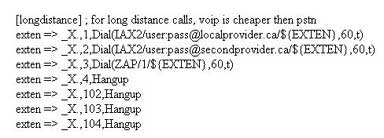Is ENUM the key to true VoIP directory assistance?


That's part of an E164.org configuration.
I admit, what I just showed you there won't qualify as eye candy. But it is something you should care about. I would like to explain.
Remember the old days when one phone company - the regional Bell or local company serving a given area, was all you needed for directory assistance?
Well, that was then. Now, with so many VoIP, cell and other telecom service providers, how are you going to find the person's phone number you are looking for?
It's not that you can call Vonage and access their directory.
Well, as IP name and address software company Nonimum's CEO Chris Risley explains in this month's edition of Converge! Network Digest, the key to all of this is ENUM.
ENUM (TElephone NUMber Mapping) is the name for an Internet Engineering Taskforce standard for directing Internet traffic using traditional phone numbers. It integrates E.164 phone numbers with IP addressing using the Domain Name System.
E164.org is a directory of telephone numbers that can be reached over the Internet.
The system works by publishing a DNS zone, 'e164.org', that can be used by various Internet applications including SER, Gnome Meeting and Asterisk. The concept here is to be able to map your phone number to an Email address, website, or VoIP address.
Let's let Chris take it from here:
ENUM uses the DNS domain structure, delegation, and protocols for resolving international phone numbers to IP addresses. A carrier or other organisation maintains the “authoritative” data for its subscribers, directing traffic destined for a specific phone number to the appropriate IP address.
The ENUM standard basically takes an international phone number, flips it around and puts periods between each number – resulting in a very odd-looking domain name that takes advantage of the hierarchical organisation of the DNS domains. The Public ENUM standard, meant to create a global directory of phone numbers, appends the “e164.arpa.“ domain to the end of the reversed and period-separated number. This fully-qualified domain name can then be sent to the local caching DNS server.
For example, when using public ENUM, the phone number
+1-650-381-6000
becomes the domain name:
0.0.0.6.1.8.3.0.5.6.1.e164.arpa.
The objective of the IETF ENUM standard (RFC 3761) is to create a global, publicly-available ENUM directory. Public ENUM trials and commercial services are underway in several countries, but adoption varies between countries and there are significant political and privacy issues to resolve. In some countries, a nationalized telephony system makes ENUM implementations easier, while in countries like the U.S. the success of ENUM will require participation and commitment from the government as well as major telephony service providers.
OK, it's Russ again. In order for businesses and people to be able to call each other over the Internet, some sort of universal, trans-service directory assistance plan needs to be put into place.
So far, it sounds as though ENUM is the best enabler to do this. But will competitors have the spirit to cooperate for the greater good, or will it take government to force every telecom provider (VoIP or no) to the ENUM table so we can get true, universal directory assistance?